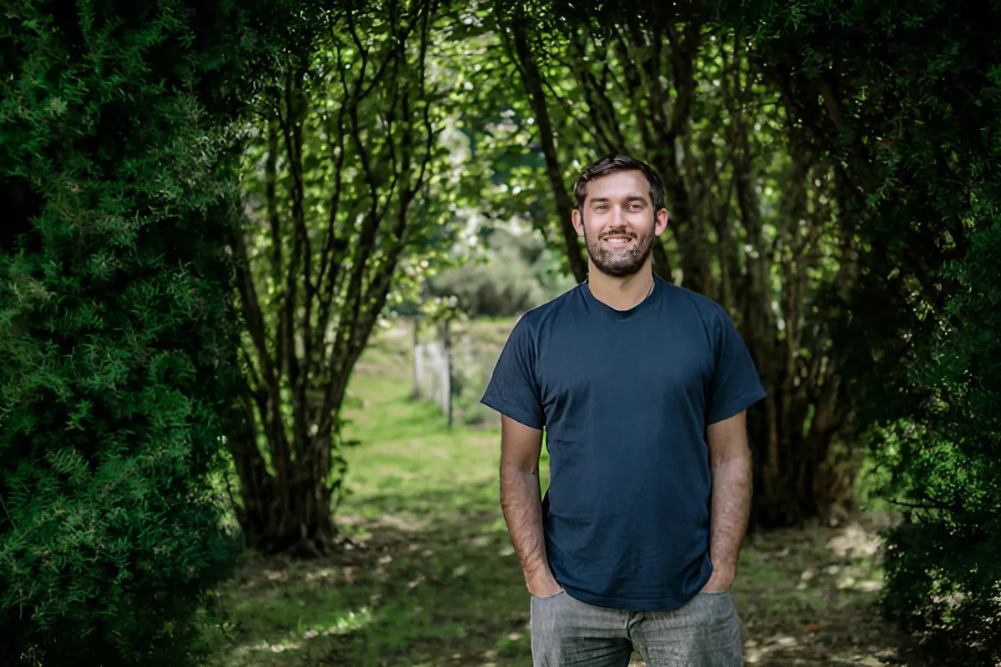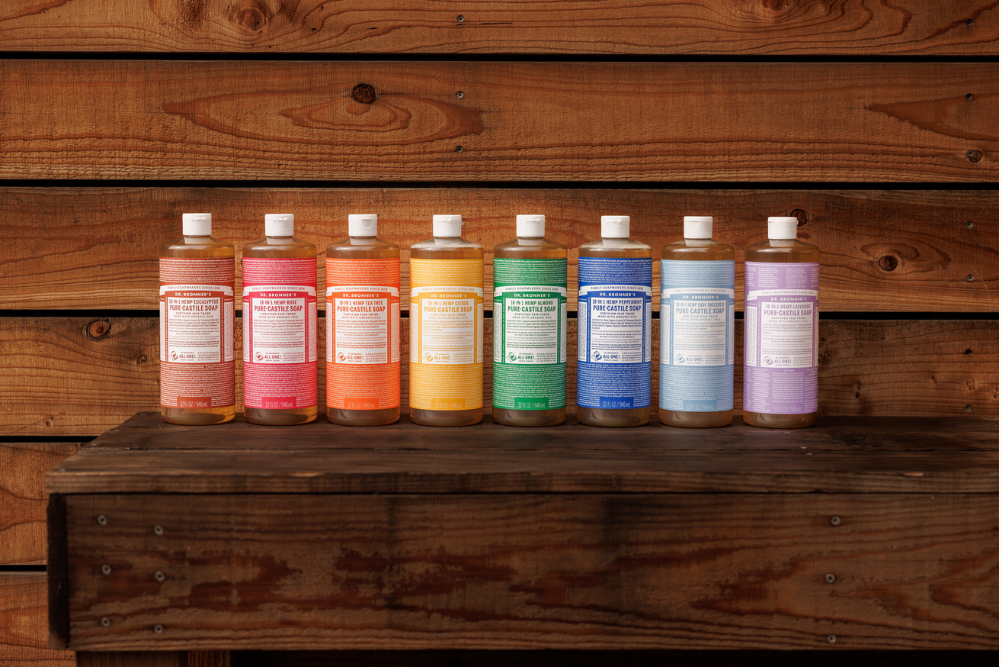A Q&A with The Chia Co
Chia is an extremely popular functional food today and is part of a wholesome diet in most homes. Originally grown in Central and South America, chia has the highest combined plant source of omega 3, fibre and protein, and is high in vitamins, minerals and antioxidants. Chia offers essential nutrition often missing in modern diets, but is now widely incorporated in our food commercially and in many kitchens across homes in Australia.
Little was known about chia when this ancient seed with grain-like qualities hit the shores of Australia. However, it quickly attained the status of being a super seed and making Australia the world’s leading irrigated chia producer.
All this was made possible by John Foss, a fourth-generation farmer from WA and founder of The Chia Co, who set out to reintroduce nutrition into our modern diets. I spoke to John about his motivation and beliefs about nutrition and chia, the challenges he faced, and what led him to start a global initiative based on chia seeds.
From wheat farming to running a global health-based company — how did this journey start? What compelled you to create The Chia Co?
My family has had a wheat farming company for about a 100 years and I was raised on that farm. When I went to school and university, I got a degree in agribusiness and marketing and went back to our family farm to grow wheat. But I was frustrated by the lack of connectivity between what we were growing as a crop and what the consumers were eating as the end product. In 2001 I was awarded the Nuffield Farming Scholarship and travelled around the world looking at trends in the food industry. When I was on that Travel and study tour, I developed a greater understanding of the food industry and how grain-based products were created into a less-than-healthy product in many cases.
I was trying to understand where I sat in the whole challenge of health and wellness as a farmer. I then stopped growing wheat and exited my farming business and started researching for plant-based solutions for health and wellness and I learnt about chia seeds. I was very excited about the nutrition in chia, but at that stage no one had really heard of it and no one knew much about the nutrition and how to consume it. I saw that there was a real opportunity because of the nutritional density of chia, and to grow it and produce it in a way which was sustainable and to introduce it to the food industry and also to consumers to include in their daily diet.
What is chia and how is it beneficial? Is there any other functional food like chia that you may consider adding to your line of products?
I looked at a lot of the ancient grains when I decided to develop chia as an industry. Chia is the richest plant form of omega 3 fibres and protein combined, so these are all essential elements missing from the modern diet. I knew if we could produce it in a sustainable way and deliver it to the market consistently there would be a real demand for chia because of its nutritional properties. It is a source of plant-based omega 3, so it is beneficial for cardiovascular health, skin and growing muscle mass, and is also an essential and valuable fatty acid. It’s a really great plant protein, high in amino acids and with a high level of dietary fibre — both soluble and insoluble. And unlike a lot of other grains and seeds, chia can be consumed as a whole grain, so it doesn’t need to be milled or processed for the nutrients to be available. This means it’s a very simple product to add to breakfast cereals, to bread, into beverages and smoothies, or into a range of other products like crackers, snacks and nutritional bars because it can be included as a whole seed.
Is chia a seed or a grain?
It is a seed but because it has all the components of a grain, it can be consumed as a whole grain as well. We use other grains and nutritional functional food crops and we are including them now in a number of products we are developing. We use oats in a lot of products because of its beneficial properties of beta glucan, we started using quinoa in some of our products, and we are looking at other ancient grains and pulses to really build our credentials in plant-based foods.
What challenges did you face while transitioning from farming to setting up a company?
The biggest challenge was that I was establishing a new crop which didn’t really have much historical production. So we had to learn the best way to grow it, harvest it, clean it, pack it and freight it. A lot of learning took place on the actual production side. At the same time, we had to educate the market – people didn’t know what the product was, they didn’t know the nutritional benefit and they didn’t know how to consume it. So it was a really big challenge to not only learn about crop production, but to also educate the market. It took me almost five years of research and development before we really started selling chia commercially. It was a big investment in terms of time and money before we saw any benefits.
When you started out, people would have not heard of chia. How did you instil a love for this product in the Australian community?
We really focussed on presenting it well and influencing the food industry — we sent nutritional information to dieticians, naturopaths, nutritionists and medical doctors because we wanted to gain credibility for the nutritional value and the benefits of chia and that’s really where we started the process of education. We knew these people had a big influence in the industry. As chia gained credibility and people understood its nutritional properties, it started to work its way through the community. Here at The Chia Co we are very focussed on telling the truth and talking about what is in chia, and not trying to overstate the benefits. Because we were looking at this business for the long-term, we wanted to ensure this would be the product in Australians’ diets for decades, not just for a few months before they’d switch to the next fad. So we were very careful to build the credentials of chia’s health benefits from the start.
What has been your key to success? What growth strategy did you employ to be successful?
Part of our strategy has been to sell chia as an ingredient to food manufacturers. We also sell it as a retail product in health food stores and in supermarkets, as well as Chia Pods, which are ready products. So there has been a lot of synergy between supplying to food manufacturers who use chia in bread, nutritional bars and beverages, and they promote the benefits of chia in their products. Simultaneously, we have been promoting the health benefits of chia, which has also helped the companies that use our chia in their products, and often they will put The Chia Co logo on their packaging to show they have got The Chia Co chia in their products. I think part of our strategy of being both an ingredient supplier to companies and being a retail product has been a good strategy, and one which has been quite successful in expanding the consumption of chia.
Besides chia seeds, you have an interesting range of products. Could you tell me more about them?
We sell seeds, both black and white, as an ingredient. We sell chia oil. We sell flour and Chia Meal which comes from chia so that’s used in a range of products. Some of our bigger food company customers are Bakers Delight, who use it in bread. Kellogg’s use it in a range of products including nutrition bars such as the Be Natural Chia Exotic Berry Bites. In the retail range we sell packaged chia. We also have a range of Breakfast Boosters and Salad Boosters which contain chia and other seeds and grains. We sell Oats + Chia, which is rolled oats porridge with chia included, and we sell Chia Pods, which are plant-based non-dairy yoghurt alternatives containing almond milk or coconut milk. These delicious Chia Pods are a nutritional dairy-free, gluten-free, on-the-go breakfast or snack solution.
Tell me a bit about how you farm chia and about your farming practices?
We have long-term relationships with all the farmers who grow chia and, as you know, I have been a long-term farmer at our family’s farms. The keys to successful chia production and why we have the best-quality chia in the world is firstly because of the latitude of the farms at Kununurra — at 15 degrees south of the equator. We also grow it in a distinctly dry season. We plant at the end of the wet season and we use irrigation to grow the crop — we have a controlled environment to ensure optimum nutrition and that the crop doesn’t get wet at the wrong time of the year. We also use sun-ripening techniques to ripen the chia without chemicals so we have the purest products. We rotate the crop every year using chickpeas, beans and other legumes to maintain a sustainable rotation.
Do you miss hands-on farming now that you run a global company?
I do. I think it is one of the biggest transitions I’ve had to make — from being hands-on, with my hands in the soil and walking in the crops, to a much more office-based position which involves communicating with customers, our team, suppliers and all the stake holders. I enjoy it but I really do love hands-on farming and crop production.
Is chia part of your diet? What’s your favourite chia recipe?
Yes, absolutely! I eat chia every day. Mostly I sprinkle it on oats in the morning or I have a chia pod for breakfast. My favourite use of chia is in a smoothie, like a banana or strawberry smoothie. In our house, we use it a lot sprinkled on salads or we put in into soup. We just add it to a lot of what we eat — an easy way to increase nutrition in your diet.
You are a busy person. How else do you incorporate health and wellness in your life?
I find it challenging but I just started yoga, which I like. I do some swimming. I used to do more long-distance swimming but now it’s more pool-based. I like cycling or running and balancing that with a family with young children, and work is always a challenge. But I really enjoy fitness.
The Chia Co is a global company operating in 36 countries. What other shores are you planning on conquering? What is the future of The Chia Co?
Our strategy from the outset has been global. We believe consumers all around the world are looking for healthier products and easier solutions for health and wellness, so we certainly see a global market for our products. Our most recent growth has been in Asia and we really see the Asian market as a developing opportunity for us. We are making small but very deliberate steps to grow our Asian business. We are currently selling in north Asia; we are in Japan, Hong Kong, Taiwan, Singapore and Malaysia and we are slowly starting to build that up. We can see that consumers in all of those markets are looking for healthy options and we are creating products that meet the taste, texture and flavour profile of those markets. We see it as an exciting opportunity and all of the initial feedback from our Asian markets is positive towards chia and the products we make.








